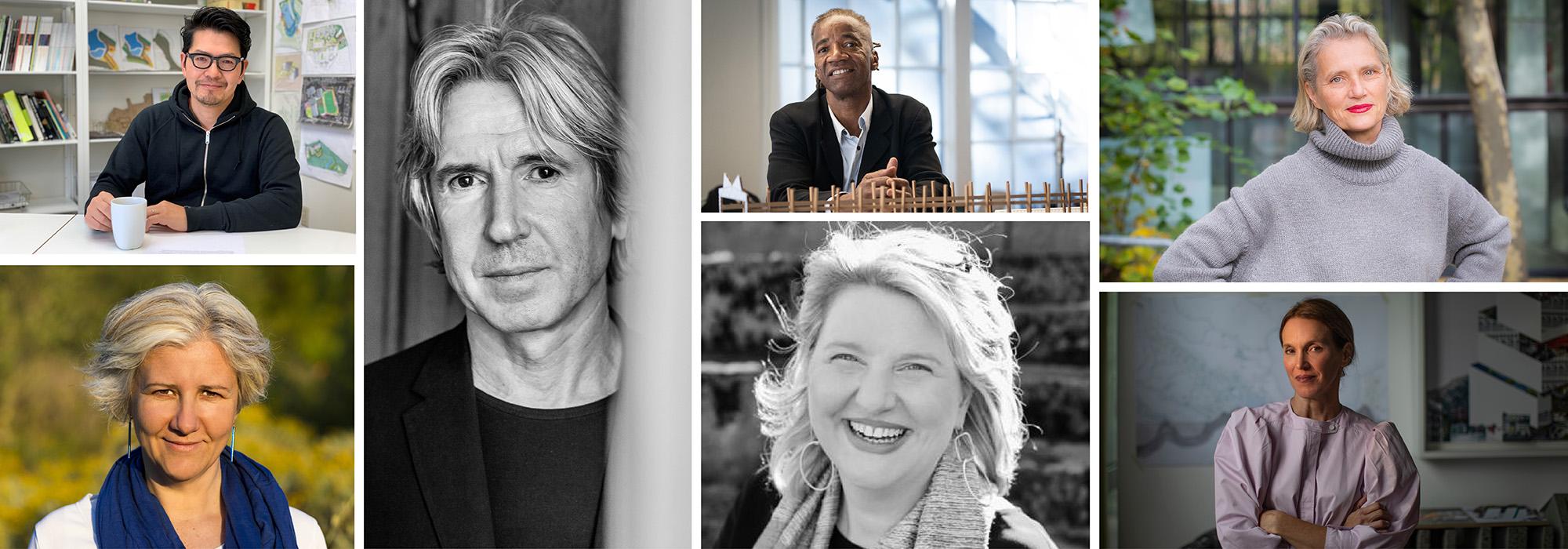Hear from the Oberlander Prize Jurors and Read the Jury Citation
The Oberlander Prize Jury: Dorothée Imbert (chair), Tatiana Bilbao, Michel Desvigne, Gina Ford, Teresa Gali-Izard, Walter Hood, and Aki Omi. The Oberlander Prize Curator: John Beardsley.
Oberlander Prize 2021 Jury Citation:
Julie Bargmann has led the profession of landscape architecture for three decades as a designer, teacher, activist, and thinker. She was one of the first to recognize the importance of engaging despoiled, even toxic landscapes and restoring them as functional, intriguing, even beautiful public spaces. She did so without disguising their troubled histories, as at the collaborative project Testing the Waters, a 35-acre park on a former coal mine in Vintondale, Pennsylvania, where acid mine discharge was converted to clean water in a series of filtering pools. This was followed by cutting-edge EPA-funded research on the regeneration of Superfund sites and planning for the rehabilitation of landscape at the historic Ford Motor Company River Rouge assembly plant.
More recently, she has turned the same attention to disused urban spaces with similarly intriguing results, whether at Urban Outfitters headquarters at the redeveloped Philadelphia Navy Yard, where concrete and rail lines were reborn in a model of sophisticated and sustainable reuse of industrial infrastructure, or at Core City Parks in Detroit, a nascent urban forest planted in artfully rearranged urban rubble. These projects embody her commitment not only to environmental restoration, but also to more equitable access to urban landscapes. She has also found the occasional private client intrigued by her approach, as at Turtle Creek Water Works in Dallas, an abandoned pump house and water-supply system redesigned for performances, art installations, and recreation. While she was involved in these projects from start to finish, she has also provided concept-design input in collaborative projects, as at Hardberger Park in San Antonio or Stearns Quarry Park in Chicago. She imagines herself as much an ideas person as designer of finished places. Trained as a sculptor at Carnegie Mellon and a landscape architect at the Harvard Graduate School of Design, she straddles the two worlds; her practice, D.I.R.T Studio, is modeled after a small art studio rather than a large design firm, with the intention of creating or joining multi-disciplinary teams as individual projects might require.
Bargmann has passed on her enthusiasm for the most challenging sites to a new generation of designers with unrivaled energy, passion and wit. She has been hugely important as a catalyst for other, younger landscape architects. At the University of Virginia, she taught a full range of courses, from studios to plants and design theory. She also labored mightily to fuse the architecture and landscape architecture programs, and co-taught with cultural historians and preservationists.
Most of all, Julie Bargmann embodies an activist approach to practice, seeking out opportunities, challenges, even intractable problems. She has been a provocateur, a critical practitioner, and a public intellectual. She embodies the kind of activism required of landscape architects in an era of severe environmental challenges and persistent social inequities. In so many ways, she builds on the legacies of Cornelia Oberlander: in her commitments to the public realm, to advancing women in the profession, to the principles of ecology and regenerative design, and to engaging diverse, even conflicted social contexts. Although not as widely celebrated as some of her contemporaries, she has been a persistent agent of change and has had a deep and lasting impact on the practice of landscape architecture. We are pleased and proud to name her the inaugural laureate of the Cornelia Hahn Oberlander International Landscape Architecture Prize.



